comfort, conversation, and books to get us through
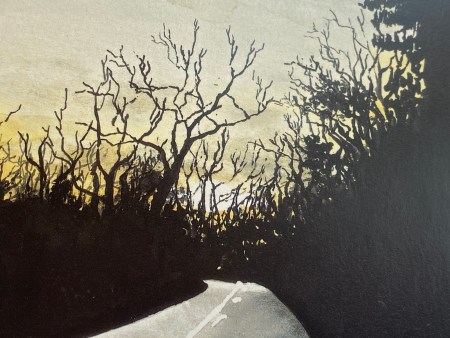 Winter is coming. And this year, even before the temperature drops below zero in New Hampshire, it’s already feeling colder and, let’s just say it, a good bit darker than usual. For many of us who have been lucky enough to be able to stay home since March, the sameness of the days has been a small price to pay for living with less risk. Over the summer there were actually weeks when I barely gave the pandemic a thought. With an ambitiously planted garden to tend, long walks to take, and leisurely family dinners to savor on the screened porch, it was possible to forget, every now and then, that we were homebound for a reason. Other than slipping on a mask to go the grocery store and washing my hands every twenty minutes (a habit now ingrained forever), life at home in July and August could resemble something close to normalcy, albeit a quiet, isolated normalcy. That, I know, was a matter of both privilege and luck.
Winter is coming. And this year, even before the temperature drops below zero in New Hampshire, it’s already feeling colder and, let’s just say it, a good bit darker than usual. For many of us who have been lucky enough to be able to stay home since March, the sameness of the days has been a small price to pay for living with less risk. Over the summer there were actually weeks when I barely gave the pandemic a thought. With an ambitiously planted garden to tend, long walks to take, and leisurely family dinners to savor on the screened porch, it was possible to forget, every now and then, that we were homebound for a reason. Other than slipping on a mask to go the grocery store and washing my hands every twenty minutes (a habit now ingrained forever), life at home in July and August could resemble something close to normalcy, albeit a quiet, isolated normalcy. That, I know, was a matter of both privilege and luck.
But with the virus surging across the land and cases in our small community on the rise for the first time, winter arrives this year with a menacing shadow. The other day my friend, gardener, writer, and popular podcaster Margaret Roach and I were chatting about how we might make it through this long season of short days, freezing temperatures, and doubled-down quarantine.
We discovered that we each aspire not just to survive these next few months, but to somehow rise up and meet their challenges with grace. To create good days at home, we agreed, would require a strategy. That means making sure we stay connected to small, tangible ways to take care of ourselves.
As someone with a bit of a prepper mindset, I’ve got the shopping part of my winter plans covered. There’s plenty of rice and coffee and toilet paper in the basement. I have long underwear and warm socks; there will be no excuses for not bundling up and getting outside in every kind of weather. That’s the easy part.
It’s the emotional demands of a long, fraught winter that will require a bit more advance planning. As always when I need to bolster myself, I turn to books. And although there will be no dinner parties, family get-togethers, houseguests, or evenings out in our future, I realize how much I’m looking forward to the opportunity to spend time this winter in the company of a few special books that feel like friends. I may or may not take a deep dive into a long novel come January. But right now, with so much loss and uncertainty in the world, I find myself reaching for books that simply offer comfort. Turns out Margaret has been doing the same.
And so we decided we’d continue the conversation we began on the phone on her popular podcast at A Way to Garden.
You can listen in here.
https://robinhoodradioondemand.com/podcast-player/18186/comfort-books-with-katrina-kenison-a-way-to-garden-with-margaret-roach-november-28-2020.mp3
For a full transcript, and to enter to win one of Margaret’s favorite books, the quirky and poignant memoir How to Catch a Mole, visit her site A Way to Garden.
As Margaret said, “It’s the week before Thanksgiving in the midst of a pandemic. No one is thinking about planting petunias.” It’s true. Instead we’re figuring out how to dial back even modest holiday plans, improvise on time-honored traditions, create more with less, and hunker down for the long haul this winter. With a little intention, we can nourish our spirits and turn our homes into spaces where we feel safe, content, and cared for.
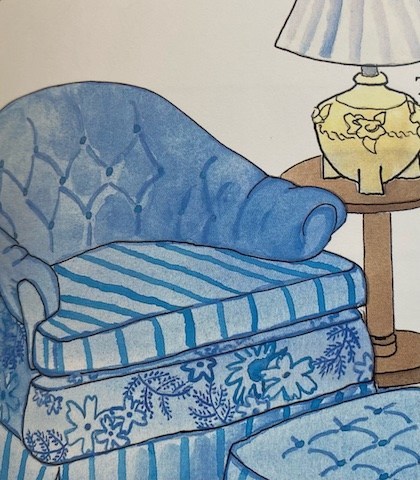 Making a list of books that inspire and console seems like a good place to start. Together Margaret and I came up with a companionable group of writers whose books are in some way a balm for hard times, reminders that our own attitudes and everyday choices have the power to make our lives happier, more fulfilling, and more in tune with what really matters.
Making a list of books that inspire and console seems like a good place to start. Together Margaret and I came up with a companionable group of writers whose books are in some way a balm for hard times, reminders that our own attitudes and everyday choices have the power to make our lives happier, more fulfilling, and more in tune with what really matters.
My own comfort list is as follows.
COZY: The Art of Arranging Yourself in the World by Isabel Gillies
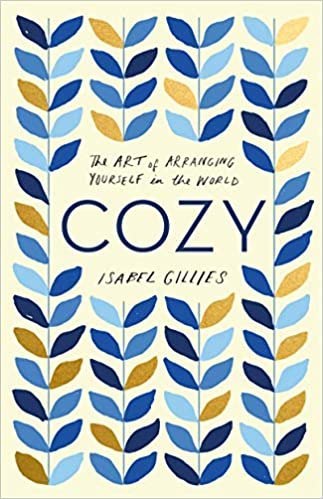 My husband read an excerpt from this treasure of a book in The Atlantic near the beginning of last March’s lockdown and was so charmed he immediately ordered a copy. (And I’ve just bought another one to give away to a lucky reader, details below.)
My husband read an excerpt from this treasure of a book in The Atlantic near the beginning of last March’s lockdown and was so charmed he immediately ordered a copy. (And I’ve just bought another one to give away to a lucky reader, details below.)
Cosy turned out to be the rare book that everyone in the family was happy to read. We even organized a dinner around the theme, complete with candlelight, comfort food, and written questions to answer and discuss.
Learning what makes each of us feel cozy turned out to be the perfect way to set a tone for the enforced intimacy that followed. How else would I have known that choosing a sweater vest to match his shirt each day makes my husband feel cozy? Or that my son Henry’s idea of coziness is seeing me pull out the KitchenAid mixer in the evening and set about making banana bread or muffins for the next day, something we now refer to as “after-dinner baking,” and which I’m much more inclined to do knowing it makes him happy.
When we talk about being cozy, most of us think of a favorite sweat shirt or a steaming cup of tea on a rainy afternoon. But Isabel Gillies suggests that coziness goes beyond mere objects.
To be truly cozy, she says, we first have to identify some truths about what makes us feel held, at ease, and at one with the world. And if we start to notice what feels cozy to us, and how we can create coziness for ourselves, then we can carry coziness into our day, bring more coziness into our lives, and know how to make ourselves cozy even in hard times.
HOME COOKING and MORE HOMECOOKING by Laurie Colwin
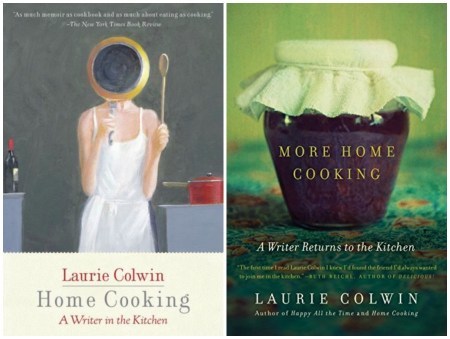 Ever since we started grocery shopping less often and eating every single meal at home, I tend to think about food morning, noon, and night. Many mornings I’ll read the front page of the New York Times and then turn straight to recipes to calm my nerves. My Ina Garten cookbooks have been in constant rotation since March. There’s been a lot of cheese.
Ever since we started grocery shopping less often and eating every single meal at home, I tend to think about food morning, noon, and night. Many mornings I’ll read the front page of the New York Times and then turn straight to recipes to calm my nerves. My Ina Garten cookbooks have been in constant rotation since March. There’s been a lot of cheese.
But for the feeling of having a best friend hanging out with you in the kitchen, there is no cosier, more encouraging, or more enjoyable companion than Laurie Colwin. When I was a young editor in New York in the ‘80s, Laurie was both a cherished acquaintance and hands-down my favorite writer; her stories and novels were at once intelligent, entertaining, and deeply touching, and I avidly collected and read them all. Later, as I negotiated the transition from single working woman picking up take-out on the way home from the office to a mom making dinner every night for a family of four, it was Laurie Colwin’s two beguiling collections of memoir-ish recipes that helped help me find my way. Laurie died in 1992 at the tragically young age of 48, but in the years since, Home Cooking and More Home Cooking have become true classics, inspiring a whole new generation of cooks and writers.
Laurie was never a person who went out much. She took pleasure in being home, in making do, in cooking simply and then squeezing in around a table to share a meal prepared with love. Her books are as much about eating as cooking, more about the pleasures of the kitchen than about creating perfection there, which makes her something of an anti-Martha Stewart and an ideal friend for these times. Yesterday, just before Margaret and I spoke, I paged through my time-worn paperback of More Home Cooking. There near the end was Laurie’s Thanksgiving chapter, with her recipe for Rosemary Walnuts, which I’ll be making next week. It reads as if it were written yesterday, except for the lines at the end, in which Laurie looks forward to one day traveling to her own daughter’s house for Thanksgiving and creating new traditions to carry on. Lest any of us need a reminder that life is precious, unpredictable, and can turn on a dime, there it is.
WHEN WANDERERS CEASE TO ROAM: A Traveler’s Journal of Staying Put by Vivian Swift
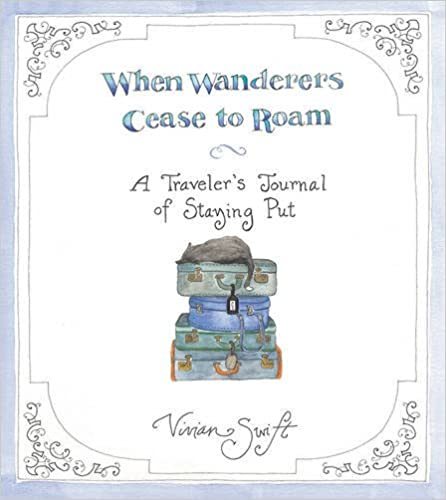 I’ve given Vivian Swift’s enchanting celebration of place to many friends over the last few years, especially those who, because of illness or injury, have found their lives severely curtailed. But now, of course, it’s the perfect book for everyone. We’re all staying put. Vivian Swift spent a lifetime trekking around the world; she had 23 different addresses in 20 years. And then, at last, she stopped moving, settled down in a small town, and began taking stock of her life and what it means to put down roots and call a place home.
I’ve given Vivian Swift’s enchanting celebration of place to many friends over the last few years, especially those who, because of illness or injury, have found their lives severely curtailed. But now, of course, it’s the perfect book for everyone. We’re all staying put. Vivian Swift spent a lifetime trekking around the world; she had 23 different addresses in 20 years. And then, at last, she stopped moving, settled down in a small town, and began taking stock of her life and what it means to put down roots and call a place home.
It’s impossible to convey the appeal of this hand-written, gorgeously illustrated, quirky and completely engaging book, but I can say that everyone I’ve given it to has fallen under its spell. Each page is a collage of writing, journaling, recipes, quotes from literature, odd bits of observation and natural history, and charming watercolors. The effect of it all is irresistible, a highly personal yet surprisingly universal ode to the joys of puttering, doodling, daydreaming, noticing. And every time I open it, I’m reminded that there is so much to see right here in my own home and outside my own window, even in the darkest days of winter. This might just be the coziest, most appealing book I know. It’s definitely the perfect book to curl up with on a cold December day.
KEEP MOVING: NOTES ON LOSS, CREATIVITY, AND CHANGE by Maggie Smith
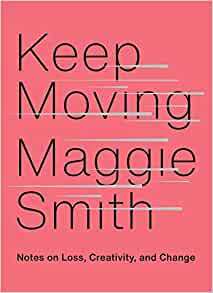 After all these months, I’ve formed some new routines that have made this strange, difficult time a bit better. One of those is attending to my sleep hygiene with more discipline. I’ve learned the hard way what not to do at the end of the day – scroll through Instagram, read the latest political news, or try to achieve Genius Level on the NYT Spelling Bee. And so, to settle down, I pick up a book. What I want once I’m tucked into bed, with only about five or ten minutes worth of mental energy left, is something short, reassuring, and easily assimilated — the grown-up equivalent of a bedtime story to gently transport my anxious mind to a place of peace.
After all these months, I’ve formed some new routines that have made this strange, difficult time a bit better. One of those is attending to my sleep hygiene with more discipline. I’ve learned the hard way what not to do at the end of the day – scroll through Instagram, read the latest political news, or try to achieve Genius Level on the NYT Spelling Bee. And so, to settle down, I pick up a book. What I want once I’m tucked into bed, with only about five or ten minutes worth of mental energy left, is something short, reassuring, and easily assimilated — the grown-up equivalent of a bedtime story to gently transport my anxious mind to a place of peace.
There are two small books that have taken up permanent residence on my pandemic bedside table. The most recent is Maggie Smith’s collection of luminous short reflections, Keep Moving. When Maggie’s 19-year marriage ended, and with it the life she had known, she spiraled into a depression so deep there were days, weeks even, when she could barely get out of bed or eat. She couldn’t produce poems during this time, but she did feel the desire to write.
“If everything was going to fall apart,” she told herself, she could at least create something. And so one day she wrote a goal for herself, just a couple of sentences, and posted it on social media. The next day, another. And so began her practice of writing a short, encouraging “note to self” – some kind of affirmation or encouragement or self-directive – every day. The question she found herself asking over and over was one I know all too well: “What now?” And the answer, always, inspired the last sentence of every goal she gave herself: Keep Moving.
Keep Moving is a book of both consolation and propulsion. It’s not lofty self-help advice, more like an encouraging friend whispering into my ear at bedtime, reminding me that I can do this, that this too shall pass, that I’m resilient enough to keep moving, come what may. Maggie’s voice may just be the one you want to hear at the end of the day, too. Keep Moving is one of those sneaky little books that confronts the truth of pain and grief head on, and yet leaves one feeling hopeful and encouraged that no matter how dark things may seem, there is something good waiting for us on the other side of loss. I’ll be giving a few of these for the holidays this year.
THE BOOK OF DELIGHTS by Ross Gay
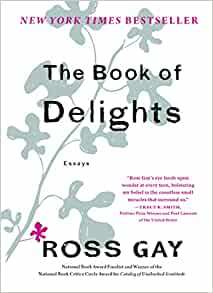 The other book I keep close at hand for those last moments before sleep is Ross Gay’s mind-expanding, gorgeously written collection of short essays about delight.
The other book I keep close at hand for those last moments before sleep is Ross Gay’s mind-expanding, gorgeously written collection of short essays about delight.
The premise is simple. Ross Gay is a poet, a passionate gardener, a Black man who does not gloss over any of the complexities or terrors of living in America at this moment. And yet on the occasion of his 42nd birthday he decided to set himself the task of writing every day about something that delighted him. The point was not to change the world, but rather to see if the very practice of noticing delight might in some way transform him. He chose to draft these short pieces quickly and by hand, and to think of the writing as a challenge to notice everything, to create room in every day for joy. Gay says it didn’t take long before he developed a kind of “delight radar.” And he also found there’s a lot to be said for the practice of flexing one’s delight muscle, especially in hard times. The more you look for and study delight, the more delight there is to study.
There is, I think, no better prescription for this moment than books that can help us steady ourselves on the shaky ground of 2020. Pandemic life is going to get harder before it gets easier. We could all use some support as we attempt to build on the mental and emotional skills we’ll need to keep going. Each of the books in my winter comfort stack are reminders of human resilience and of our innate capacities for kindness, joy, and observation. Together in spirit, we’ll spend this long winter staying home for the good of all. But at least we can make ourselves cozy as we journey in place. And what a gift it is, with so much at stake, to be carried by words into the hearts and minds of fellow travelers, seekers with whom we share a keen awareness of loss and pain, and, too, a commitment to stay open to all that is holy, ordinary, and beautiful in our lovely, imperiled world.
how to win a copy of Cozy by Isabel Gillies
I’ve purchased one copy of Cozy to give away. To enter to win, just leave a note in the comments section below. Answer any one (or all) of the “cozy” questions we asked at our family dinner table. I’ll draw a winner at random on Saturday, December 5.
When you think of your childhood, what cozy memory comes to mind?
What spot in your house is your favorite cozy place? What do you do there?
How do you create coziness when you’re all alone?
If possible, do consider purchasing these titles from your local independent bookstore. And if you prefer to order your books from Amazon, just click on each highlighted title above. (These are affiliate links.)
And do be sure to click over to Margaret and enter her give-away, too.
Stay home, my friends. Get cozy. Make soup. Cultivate delight. Keep moving and be well. We’re in this together!
(Both watercolors above are from Vivan Swift’s When Travelers Cease to Roam.)
The post comfort, conversation, and books to get us through appeared first on Katrina Kenison.



